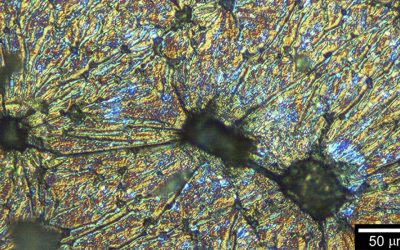 Poly(acrylates) and poly(methacrylates) are highly important materials for industrial applications – for example in high performance paints and adhesives.
Poly(acrylates) and poly(methacrylates) are highly important materials for industrial applications – for example in high performance paints and adhesives.
Thus, an investigation of the polymerization mechanism and kinetics of their monomeric building blocks is of high interest and monomer-specific temperature-dependant propagation rate coefficients, kp, as well as Arrhenius parameters, A and EA, are strongly desired data for the synthesis of tailor-made polymers.
Previous publications showed distinct trends in the propagation rate coefficients of several investigated (meth)acrylate groups determined via the pulsed laser polymerization – size exclusion chromatography (PLP-SEC) technique and the database of propagation rate coefficients is already well established.
The group of Barner-Kowollik from the Karlsruhe Institute of Technology (KIT) now employed the IUPAC recommended PLP-SEC method with a high frequency 500 Hz excimer laser for the determination of propagation rate coefficients and Arrhenius parameters to probe for possible trends and family-type behavior within a series of branched acrylates in 1M solution in butyl acetate.
The data in solution are compared to previously published data of branched acrylates in bulk and branched methacrylates, accompanied by an encompassing synopsis of the so-far reported trends among acrylic and methacrylic monomers.
The evaluation of an extended library of propagation rate coefficients for branched acrylates reveals no global trend or family-type behavior and the study evidences that it is mandatory to determine monomer-specific kinetic data for each branched acrylate of interest.

















